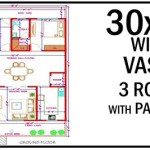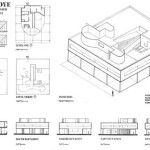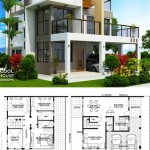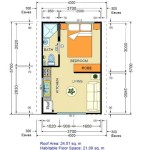Aluminum Houseboat Plans and Kits: A Comprehensive Overview
Houseboats offer a unique blend of maritime adventure and comfortable living, providing the freedom to explore waterways while enjoying the amenities of a traditional home. While various materials can be used in houseboat construction, aluminum has emerged as a popular choice due to its inherent advantages. This article explores the considerations surrounding aluminum houseboat plans and kits, outlining the benefits, design aspects, construction methods, and factors influencing the selection process.
The allure of a houseboat lies in its ability to combine recreation and residence. Unlike traditional homes tethered to land, a houseboat allows for travel and exploration of rivers, lakes, and coastal waterways. The design and construction of a houseboat, however, require careful planning and adherence to marine engineering principles. Aluminum, with its light weight and corrosion resistance, offers a compelling solution for houseboat construction, allowing for efficient navigation and long-term durability.
Advantages of Aluminum Houseboats
Aluminum offers several distinct advantages over other materials commonly used in houseboat construction, such as steel, wood, or fiberglass. These advantages stem from its unique material properties and its suitability for the marine environment.
Firstly, aluminum boasts a significantly lower weight-to-strength ratio compared to steel. This lighter weight translates into improved fuel efficiency, enhanced maneuverability, and the potential for increased payload capacity. A lighter houseboat requires less power to propel, leading to reduced fuel consumption and lower operating costs. The improved maneuverability allows for easier navigation in confined waterways and contributes to a more responsive vessel.
Secondly, aluminum exhibits exceptional corrosion resistance in both freshwater and saltwater environments. Unlike steel, which is prone to rust, aluminum forms a protective oxide layer on its surface, preventing further corrosion. This inherent corrosion resistance minimizes the need for extensive anti-corrosion treatments and extends the lifespan of the houseboat. This reduced maintenance requirement translates to significant cost savings over the lifetime of the vessel.
Thirdly, aluminum is a relatively easy material to work with, particularly when using modern welding techniques. Aluminum welding is a specialized skill, but when performed correctly, it creates strong, durable joints that are resistant to fatigue and cracking. This ease of fabrication allows for complex designs and customized layouts, providing greater flexibility in the overall construction process.
Finally, aluminum is a recyclable material. Choosing aluminum for houseboat construction contributes to environmental sustainability. The ease of recycling aluminum ensures that the material can be reused at the end of the houseboat's lifespan, reducing waste and conserving natural resources.
Design Considerations for Aluminum Houseboat Plans
The design of an aluminum houseboat is a complex process that requires careful consideration of several factors, including the intended use, size, stability, and aesthetic preferences. The design process typically involves naval architects and marine engineers who possess the expertise to ensure the structural integrity and seaworthiness of the vessel.
One of the primary considerations is the size and layout of the houseboat. The size will dictate the overall displacement and stability characteristics, while the layout will determine the functionality and comfort of the living spaces. The design must accommodate the intended number of occupants, storage requirements, and desired amenities. Factors such as accessibility, ventilation, and natural lighting should also be carefully considered.
Stability is a critical aspect of houseboat design. A stable houseboat is less prone to rolling and pitching, providing a more comfortable and safe experience for occupants. The stability of a houseboat is influenced by its hull shape, weight distribution, and center of gravity. Naval architects use sophisticated software and calculations to ensure that the houseboat meets the required stability criteria.
The hull design is another crucial element. Aluminum houseboats can have various hull configurations, including pontoon-style hulls, displacement hulls, and modified displacement hulls. Pontoon hulls offer excellent stability and shallow draft, making them suitable for lakes and rivers. Displacement hulls provide efficient performance at lower speeds, while modified displacement hulls offer a compromise between speed and efficiency. The choice of hull design depends on the intended use and performance requirements of the houseboat.
The superstructure design, which encompasses the deck, cabin, and roof, also plays a significant role in the overall aesthetics and functionality of the houseboat. The superstructure must be structurally sound and capable of withstanding wind and wave loads. The design should also incorporate features such as windows, doors, and ventilation systems to ensure a comfortable and livable environment.
Finally, adherence to applicable regulations and standards is essential. Houseboats must comply with the regulations set forth by maritime authorities, such as the Coast Guard or equivalent organizations. These regulations cover aspects such as safety equipment, navigation lights, and hull integrity. Compliance with these standards ensures the safety of the occupants and the environment.
Aluminum Houseboat Kits: Options and Considerations
Aluminum houseboat kits offer an alternative to custom-built houseboats, providing a pre-engineered and partially prefabricated solution. Kits typically include the aluminum hull components, framing members, and other essential materials, along with detailed assembly instructions. Choosing a kit can potentially reduce construction time and cost compared to building a houseboat from scratch.
There are various types of aluminum houseboat kits available, ranging from basic hull kits to more comprehensive kits that include the superstructure and interior components. A basic hull kit typically provides the aluminum hull panels, stringers, and bulkheads, allowing the builder to customize the superstructure and interior according to their preferences. A more comprehensive kit may include the framing for the cabin, deck panels, windows, and doors.
When selecting an aluminum houseboat kit, it is crucial to consider the reputation and experience of the kit manufacturer. A reputable manufacturer will have a track record of producing high-quality kits that are easy to assemble and meet industry standards. It is also essential to review the kit's specifications and ensure that it meets the intended use and size requirements.
The skill level required for assembling an aluminum houseboat kit is a significant consideration. While some kits are designed for amateur builders with basic welding and fabrication skills, others may require more advanced skills. It is essential to assess one's own capabilities and choose a kit that aligns with their skill set. If necessary, professional assistance can be sought for specific tasks, such as welding or electrical wiring.
The cost of an aluminum houseboat kit can vary depending on the size, complexity, and included components. It is essential to obtain quotes from multiple manufacturers and compare the prices and features of different kits. In addition to the cost of the kit itself, it is also necessary to factor in the cost of additional materials, equipment, and labor required for completing the construction.
Furthermore, ensure the kit adheres to relevant safety standards and regulations. Verification of compliance with marine safety standards from the kit manufacturer is crucial for ensuring a safe and legally compliant vessel. Reviewing the kit documentation and seeking expert advice can help ensure adherence to these standards.
Finally, assess the availability of technical support from the kit manufacturer. A manufacturer offering comprehensive technical support can be invaluable during the assembly process, addressing any questions or concerns that may arise. This support can range from providing detailed assembly instructions to offering phone or online assistance.
In conclusion, aluminum houseboat plans and kits offer a viable option for individuals seeking a unique and versatile living experience on the water. By carefully considering the advantages of aluminum, the design aspects, and the options available for kits, prospective houseboat owners can make informed decisions that align with their budget, skill level, and desired lifestyle. Thorough research and planning are essential for ensuring the successful construction and enjoyment of an aluminum houseboat.

Steel Boat Kits Building Plans And Designs

Bruce Roberts Steel Boat Plans Building Boatbuilding Kits

Boat Building Cutting Files Plans Kits Steel Aluminum

16 Ft Orca 1327 Aluminum Boat Plans Designs By Specmar

Houseboat Plans On How To Build A With Free As Bonus

Plate Alloy Boat Kits

Trawlers Trawler Yachts Fishing Boat Plans Passagemakers Liveaboard Steel Kits

Alloy Kitset Boats

Alloy Kitset Boats
Aluminium Fishing Boat Plans Design Net








